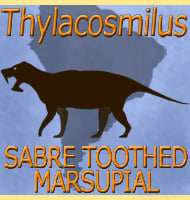In Depth
Ajnabia is a genus of hadrosaurid dinosaur that lived during the late Maastrichtian period towards the end of the Cretaceous period. Ajnabia made headlines in the paleontological world when it was described as this represented the first time that hadrosaurid dinosaur fossils had been found in Africa. Hadrosaurid dinosaurs were for a long time associated with North America and Asia, though increasing numbers of hadrosaurid dinosaur fossils are being found from European and South American deposits.
Africa at the time of the late Cretaceous was thought to have been cut off from the rest of the world meaning that hadrosaurs could not spread into Africa. This theory was once proposed for the lack of hadrosaurid dinosaur fossils in South America, or at least until they started being found there. It may well be that as sea levels went up and down, and continents shifted, temporary land bridges may have occasionally appeared, allowing for dinosaurs like hadrosaurs to spread out into new territories.
The only other explanation is that Ajnabia either swam or drifted across the sea from Europe to settle in Africa. Indeed, Ajnabia is noted for a strong similarity to the hadrosaurid genus Arenysaurus which is known from Europe. Could it be that Ajnabia was a freak occurrence of a dinosaur crossing the sea, perhaps already dead and floating along the surface because its body was bloated by gasses? Or does the Ajnabia holotype represent an individual from a stable population of hadrosaurs living in Africa?
Further Reading
- The first duckbill dinosaur (Hadrosauridae: Lambeosaurinae) from Africa and the role of oceanic dispersal in dinosaur biogeography. - Cretaceous Research: 104678. - Nicholas R.Longrich, Xabier Pereda Suberbiola, R. Alexander Pyron & Nour-Eddine Jalil - 2020.








